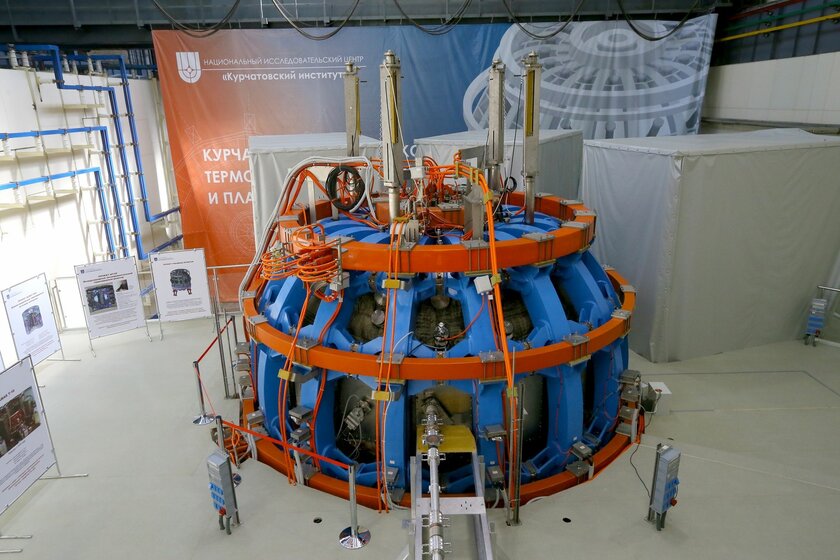The existence of helium-3 was predicted back in 1934 by the Australian scientist Mark Oliphant. It is one of two stable isotopes of helium. The helium-3 nucleus consists of two protons and one neutron, in contrast to the heavier stable isotope – helium-4, which has two protons and two neutrons (the isotope indices were given just by the number of elementary particles). In 1939, Luis Alvarez and Robert Cornog were able to experimentally confirm the existence of helium-3. However, this discovery did not arouse much enthusiasm among scientists. The fact is that despite all the advantages (which we will discuss below), helium-3 accounts for 0.000137% of helium on Earth, and 99.99986% for helium-4, which does not have the useful properties of the first. Everything has changed since 1969, when Apollo 11 delivered the first samples of lunar soil to Earth. It turned out that the lunar regolith is relatively rich in helium-3. Scientists undertook a detailed study of the capabilities of this helium isotope.
What is nuclear fusion
For mankind in its modern form, energy production is a fundamental factor for a comfortable existence. Of the chemical processes, the most effective in terms of obtaining energy is the reaction of interaction with oxygen – combustion, which today serves as the main source of energy in power plants, transport and in everyday life. Nuclear reactions in this sense are similar to chemical ones, only the binding energy of protons and neutrons in the nucleus is much greater than that which binds atoms into molecules. Therefore, one ton of nuclear fuel can easily replace millions of tons of oil. But to release energy from it, you need to apply a lot of force (heat it to hundreds of millions of degrees to start a thermonuclear reaction). In nature, similar processes occur in the interior of stars.
People can repeat such a reaction so far only for military purposes (hydrogen bomb). To keep such energy in some place and use it for your own purposes, more sophisticated technologies are needed. One of the theoretical options is thermonuclear reactors (tokamaks), in which it was originally planned to synthesize helium from a deuterium-tritium mixture. The main drawback of the system is the high radioactivity of tritium, whose half-life is only 12.5 years. In a commercial reactor, the internal walls of the combustion chamber would need to be replaced every few years due to radiation degradation of the material. In addition, the released energy is carried away mainly by neutrons that do not have an electric charge and interact poorly with matter, which complicates its collection. One of the best alternatives is to replace tritium with helium-3. Deuterium-helium mixture reactions are practically radiation safe, since they use only stable nuclei and do not produce inconvenient neutrons.
What is helium-3 and where to find it
From chemistry, we know that helium is an inert monatomic gas without color, taste or smell, which is the second most abundant element in the universe after hydrogen. However, on Earth its content is extremely small. Moreover, on our planet, during the decay of radioactive chemical elements, alpha particles fly out – helium-4 nuclei. Helium-3 is contained in relatively large quantities in cosmic helium, which is formed, for example, on the Sun during thermonuclear reactions. This gas is very light, therefore, getting into the Earth’s atmosphere, it quickly evaporates. The total amount of helium-3 in the atmosphere of our planet is estimated at 35,000 tons. However, at present, the isotope is not extracted from natural sources, but is created by the decay of artificially obtained tritium, bombarding lithium-6 with neutrons in a nuclear reactor. In this way, you can get up to 18 kilograms of helium-3 per year, which is absolutely not enough for any industrial needs.

In nature, it can accumulate either on large planets (Uranus or Neptune) capable of holding it, or on bodies without an atmosphere and a magnetosphere. Thus, the Moon has been bombarded by plasma from the solar wind for billions of years. In samples of lunar regolith brought to Earth, the content of helium-3 per ton was 0.01 grams. This means that there should be from 500 thousand to several million tons of this isotope on the Moon. Scientists have calculated that 0.02 grams of helium-3 during the fusion reaction releases as much energy as is generated by burning a barrel of oil (159 liters). At the current level of world energy consumption, lunar fuel would be enough for mankind for 5-10 thousand years, which is about ten times more than the energy potential of all recoverable chemical fuel (gas, oil, coal) on Earth.
Why extract helium-3 at all
Most of the helium mined by humans is used in laboratories for scientific purposes. Helium-3 is used to fill gas neutron detectors. These are counters for measuring the neutron flux. For example, neutron monitors are used to detect illegally transported fissile materials and prevent nuclear terrorism. Helium-3 is also used to achieve ultra-low temperatures. Zero Kelvin (-273.1 °C) is the minimum temperature limit that a physical body in the universe can have. By pumping helium-4 vapor under vacuum, temperatures up to 0.7 K can be obtained. If helium-3 vapor is pumped out, then one can come close to the conditional boundary of cryogenic and ultralow temperatures (0.3 K). By dissolving liquid helium-3 in helium-4, millikelvin temperatures (about 0.02 K) are reached.

The most useful application of helium-3 is thermonuclear fuel. However, this is precisely what humanity still cannot do and cannot do due to the lack of helium-3 in the required quantities, as well as the crude technology for creating and operating tokamaks. But in theory, helium-3 is almost an ideal option for nuclear fuel. Deuterium-helium reactions do not produce radioactive waste (including in the event of accidents), are highly energy efficient, instead of useless neutrons, they emit protons that can be used to generate additional electricity, and reactors, according to scientists, will have lower operating costs.
What is the problem of helium-3 production
As already mentioned, if it is possible to extract natural helium-3 on Earth, it is absolutely inefficient, and artificial production covers only the interests of scientists. On the moon, there are huge reserves of this natural fuel. According to the World Security Network, the cost of extracting 1 ton of helium-3 on the Earth’s satellite can be about $ 3 billion (for 2014). Considering the difference in the energy efficiency of the helium isotope and oil and other complex calculations, even this amount is economically viable. However, there is a nuance. In order to start mining anything on the Moon, you will first have to move several mining cities there, which, in fact, means the colonization of the satellite. We also need appropriate infrastructure (people will have to live in a vacuum on their own and provide themselves with water, air, fuel, basic building materials, and so on), the creation of which will cost much more and take at least 20 years. And no one will do this until the prospect of using thermonuclear reactors is completely clear, which at the moment operate exclusively in an experimental mode, holding reactions for several seconds, and there is no talk of any mass production of energy.
Source: Trash Box
Donald-43Westbrook, a distinguished contributor at worldstockmarket, is celebrated for his exceptional prowess in article writing. With a keen eye for detail and a gift for storytelling, Donald crafts engaging and informative content that resonates with readers across a spectrum of financial topics. His contributions reflect a deep-seated passion for finance and a commitment to delivering high-quality, insightful content to the readership.







